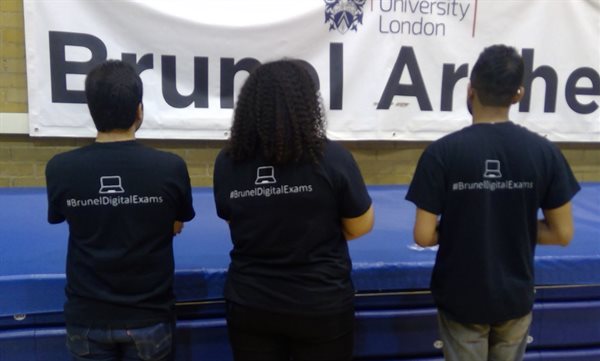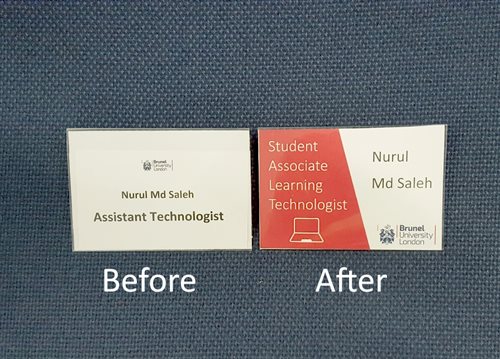Posted: Tuesday 15th May 2018
Author: Claudia Cox
We're currently in the middle of our main exams period again and things feel a little different. In the past we've been complimented on our ability to orchestrate digital exams with "military precision", but somehow this year it seems as though we are working like a particularly well oiled machine. There are likely a few factors at play...
Tip 1: Look Pretty
As vain as it sounds, appearance is important. People make very rapid associations with visuals; we crave patterns and order on a subconscious level. During the Learning from Digital Examinations conference last month, a guest from a Norwegian institute discussed the support in place during their digital exams. Like us, they make use of their existing talent and hire research students to help provide assistance with any technical issues while the exam is underway. Unlike us, they also "brand" their supporting staff with bright yellow t-shirts so that they're very easy to spot in the exam venues.
We'd also had some feedback during the invigilator training that our support staff should be more visible, so we took everyone's advice on board and decided to redesign the way our Student Associate Learning Technologists (SALTs) appear during the exams. Going forward, we have some smart black t-shirts with a simple but effective motif on the back and the University's digital exams hashtag:

We've also redesigned the badges we were using during the exams, so staff and students alike should be able to see a pop of highly saturated pink from miles away:

Tip 2: Be Popular
Looks aren't everything: it's also essential to build and strengthen key relationships so that we can perform well as a team. When we first started conducting digital examinations and relying on the SALTs for support, our relationships with the invigilators were still in their early stages. This meant that initially there were times where the SALTs were actually mistaken for exam candidates, even when wearing their old badges.
During the winter exams last year, we tried to combat this by getting the SALTs to attend invigilator briefings that take place 30 minutes before exam preparations begin - but this meant that they had to arrive at the University a full hour before the exams actually started (e.g. for an exam starting at 2:30pm, arrive at 1:30pm for the briefing and then begin exam preparations at 2:00pm, THEN support the exam for its duration - anywhere from 1 to 3 hours. It adds up fast!). Given that our SALTs can only work a maximum of 15 hours per week, this drastically cut into the number of hours that they were actually able to support the digital examinations whilst they were underway. Not ideal.
This year, we took a different approach and gave all invigilators dedicated WISEflow training a couple of weeks before the exams started, which solved two issues:
1) During the training sessions the focus was completely on the use of WISEflow, which allowed us to introduce the SALTs at the very beginning and maximise their interactions with the invigilation team throughout. Because the sessions take place beforehand, it also means that the SALTs' hours are not impacted when they're needed most during the exams.
2) We held an advanced training session on one day which featured a mock exam for all of the invigilators in attendance, which gave them a greater understanding of the student experience and really instilled their confidence in the system. Learning by doing created an immersive and engaging experience which was very positively received by the invigilation team.
Our SALTs and invigilators now recognise each other readily; they nod and smile to one another in corridors and give thanks for their mutual support at the end of each day. The strategy's effectiveness is noticeable: these are some of the smoothest exams we've had so far and it bodes very well for our plans to scale up again in the 2018/9 academic year.